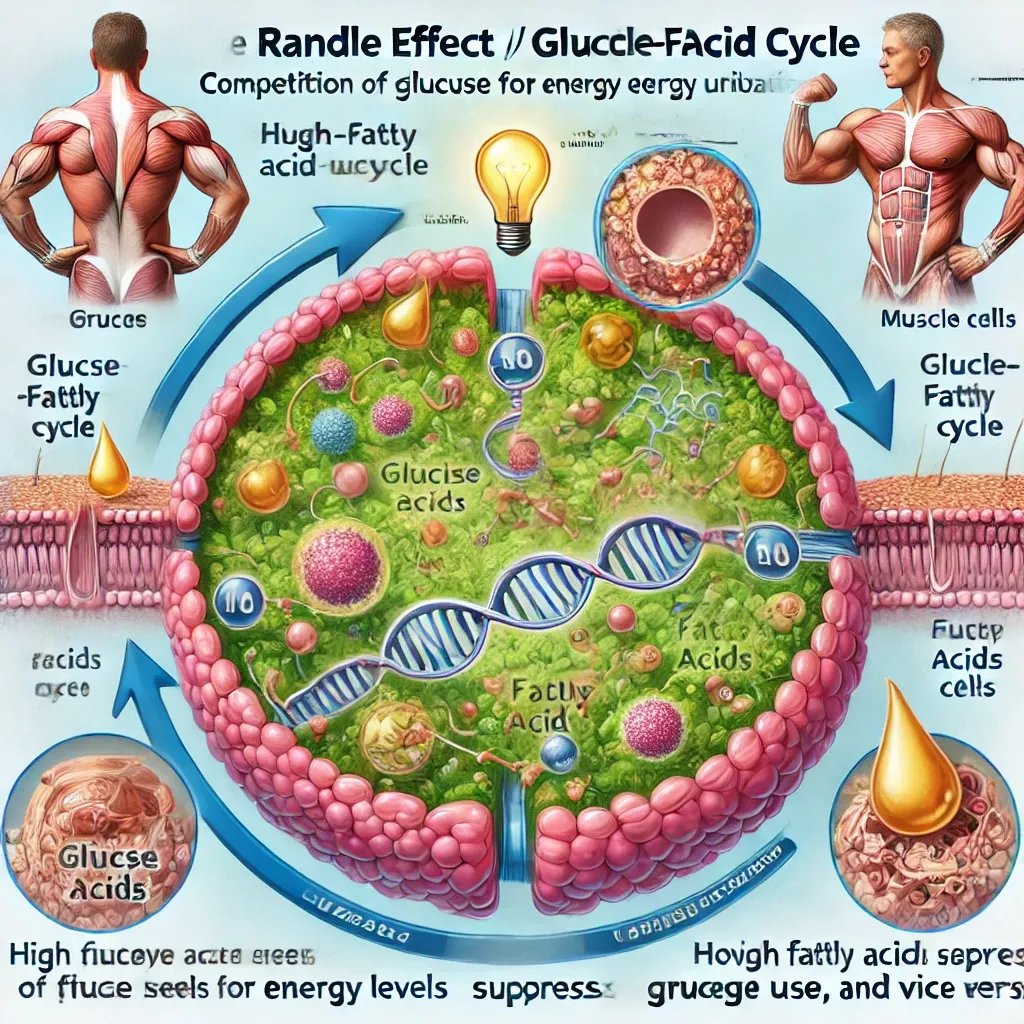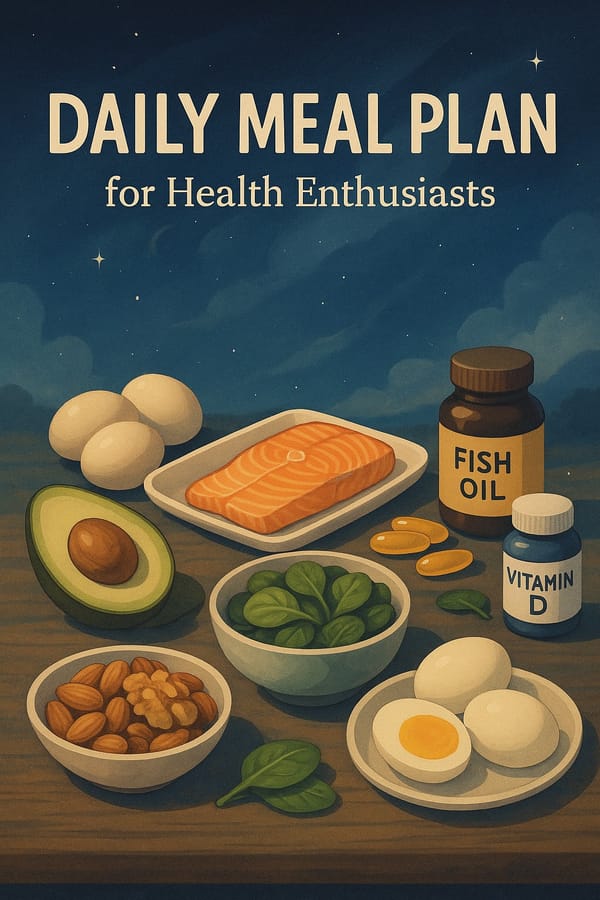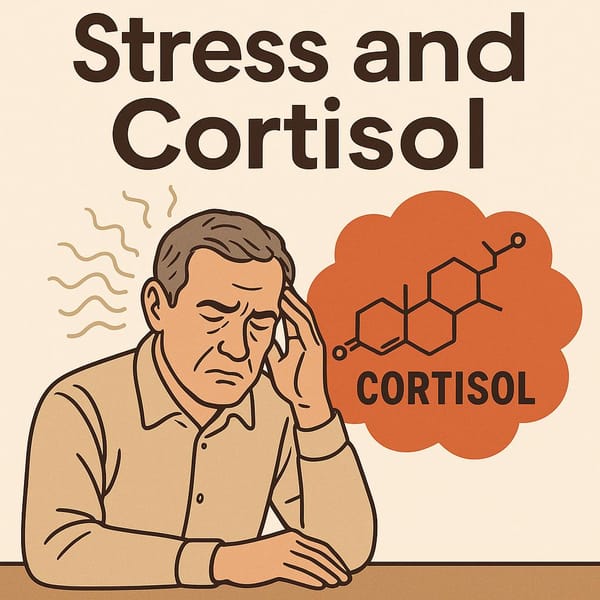Understanding the Randle Effect in Depth and How to Apply It to Health Management for the 50+ Age Group
Gain insight into the Randle Effect—a key metabolic mechanism for those over 50. Learn how balanced nutrition, targeted exercise, and lifestyle adjustments can improve insulin sensitivity, aid in fat loss, and elevate overall health.

Introduction
The Randle Effect, also known as the “Glucose–Fatty Acid Cycle,” is a crucial mechanism in the human body that governs the metabolism of energy from two primary sources: glucose (sugar) and fatty acids (fats). For individuals aged 50 and above, understanding the Randle Effect can be particularly beneficial because metabolic rate naturally declines with age, increasing the risks of insulin resistance, elevated blood sugar, and excess fat accumulation. By incorporating strategies that enhance the balance of energy use, we can effectively reduce the risk of chronic diseases such as type 2 diabetes and heart disease. In this article, we will delve into the fundamentals of the Randle Effect, explore its importance for the 50+ demographic, and provide evidence-based tips for dietary choices, exercise, rest, and stress management to optimize health.
1. What is the Randle Effect?
The Randle Effect describes the competitive relationship between glucose and fatty acids as energy sources in the body. When fatty acid usage increases, the body suppresses glucose utilization, and vice versa. This balance plays a significant role in regulating blood sugar levels and insulin activity [1].
1.1 Discovery of the Randle Effect
- The concept was introduced by Philip Randle in the 1960s, following research on free fatty acids in the bloodstream and their impact on glucose uptake in muscles.
- His findings underscored how shifting between glucose and fatty acid metabolism can substantially affect insulin sensitivity and blood sugar control.
1.2 Core Mechanism
- Elevated levels of free fatty acids encourage the body to rely on fats for energy, decreasing glucose usage.
- In contrast, high blood sugar levels combined with sufficient insulin drive cells to favor glucose, reducing fatty acid oxidation.
2. Why is it Important for People Aged 50+?
2.1 Blood Sugar Regulation
- An imbalance in the Randle Effect can lead to insulin resistance, a key factor in type 2 diabetes.
- Diets high in unhealthy fats or sugars can skew the Randle Effect and compromise blood sugar management.
2.2 Sarcopenia (Muscle Loss)
- After 50, individuals are prone to losing muscle mass. When the Randle Effect is not well-regulated, the body may rely excessively on either fats or glucose, hindering adequate protein synthesis in muscles.
2.3 Risk of Other Health Issues
- Chronic imbalances in fatty acid and glucose metabolism can increase the likelihood of heart disease and high blood pressure.
- Proper diet and exercise become more critical for maintaining healthy metabolic function.
3. Diet Tips to Support the Randle Effect
3.1 Manage Fat and Sugar Intake
- Focus on healthy unsaturated fats, such as olive oil, canola oil, and fatty fish like salmon and mackerel.
- Avoid trans fats, saturated fats, and processed sugars found in sweets and sugary beverages.
3.2 Increase Dietary Fiber
- Whole grains (brown rice, oatmeal), fruits, and vegetables slow sugar absorption and support digestive health.
- Fiber-rich foods help control calorie intake and maintain stable blood sugar.
3.3 High-Quality Proteins
- Lean poultry, fish, tofu, eggs, and legumes can promote muscle preservation and keep blood sugar stable.
- Aim for 1–1.2 grams of protein per kilogram of body weight daily, adjusted for individual needs.
3.4 Meal Frequency
- Eating 4–5 smaller meals a day can prevent large insulin spikes.
- Consult a nutritionist for a tailored approach.
4. Exercise Strategies for Balancing the Randle Effect
4.1 Resistance Training
- Weightlifting or using resistance bands helps build muscle mass and can boost metabolic rate.
- Start with lighter weights and gradually increase the load.
4.2 Aerobic Exercise
- Activities like brisk walking, swimming, or cycling (30 minutes/day, at least 5 days/week) improve insulin sensitivity.
- Sustained moderate exercise helps the body burn both glucose and fats efficiently.
4.3 Daily Movement
- Incorporate small activities like taking the stairs or doing household chores.
- Regular movement throughout the day increases overall caloric expenditure.
5. Rest and Stress Management
5.1 Importance of Adequate Sleep
- Aim for 7–8 hours of quality sleep. Insufficient rest can disrupt hormones related to hunger and insulin sensitivity.
5.2 Stress Management
- Chronic stress elevates cortisol, which can lead to higher glucose levels.
- Practices like meditation, yoga, and deep breathing help maintain metabolic balance.
6. Leveraging the Randle Effect to Reduce Fat Accumulation
6.1 Meal Timing
- Intermittent fasting (IF) can encourage the body to burn stored fat for energy.
- Consult a healthcare professional before making significant dietary changes.
6.2 Limit Refined Carbohydrates
- Reduce high-sugar snacks and beverages.
- Opt for complex carbs and fiber-rich foods to stabilize blood sugar.
6.3 Exercise in a Low-Glucose State
- Light aerobic workouts in a fasted state may promote higher fat oxidation.
- Monitor blood sugar to avoid hypoglycemia.
6.4 Combine Strength and Cardio
- Resistance training increases muscle mass, boosting overall metabolism.
- Adding cardio helps burn calories, balancing both glucose and fat usage.
6.5 Track Your Progress
- Keep a log of daily food intake, exercise routines, and weight.
- Adjust your plan based on real-time results and professional advice.
6.6 Emphasize Stress Relief and Quality Sleep
- Chronic stress and sleep deprivation can undermine metabolic efforts.
- Ensure adequate rest and employ relaxation techniques to optimize fat-burning.
7. Health Check-Ups and Monitoring
7.1 Blood Sugar and Insulin Tests
- Routine testing of fasting blood glucose and HbA1c can detect early issues.
7.2 Lipid Profile Checks
- Monitoring LDL, HDL, and triglycerides is crucial for cardiovascular health.
7.3 Body Composition Analysis
- Bioelectrical Impedance Analysis (BIA) or DXA scans measure fat and muscle mass.
- Data can inform personalized diet and exercise plans.
8. Conclusion and Recommendations
The Randle Effect governs the dynamic usage of glucose and fats in the body, a mechanism that becomes increasingly pivotal for individuals over 50 due to a slowing metabolic rate. By understanding and managing this cycle—through balanced nutrition, regular exercise, adequate rest, and stress control—older adults can reduce risks associated with insulin resistance, excessive weight gain, and cardiovascular issues.
For those aiming to lose fat, techniques like Intermittent Fasting, reducing refined carbohydrates, and incorporating both resistance training and aerobic workouts can significantly enhance the body’s ability to tap into fat stores. Pairing these strategies with consistent health monitoring helps ensure you stay on course for long-term wellness.
References
- Randle PJ, Garland PB, Hales CN, Newsholme EA. The glucose fatty-acid cycle. Its role in insulin sensitivity and the metabolic disturbances of diabetes mellitus. The Lancet. 1963;281(7285):785-789.
- Kelley DE, Mandarino LJ. Fuel selection in human skeletal muscle in insulin resistance: a reexamination. Diabetes. 2000;49(5):677-683.
- WHO guidelines on physical activity and sedentary behaviour. World Health Organization, 2020.
Note: This article is for informational purposes and is not a substitute for professional medical advice. Individuals with existing health conditions should consult qualified healthcare providers before making significant changes to their diet or exercise regimen.



